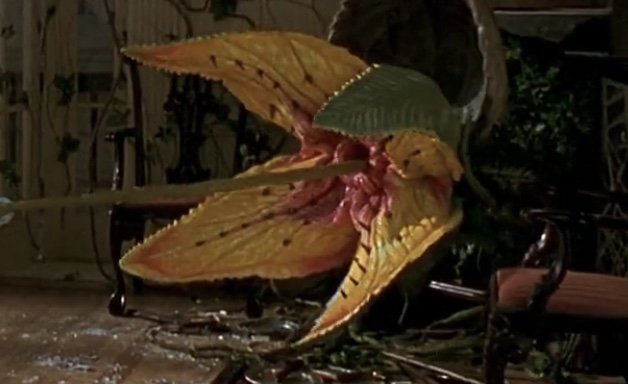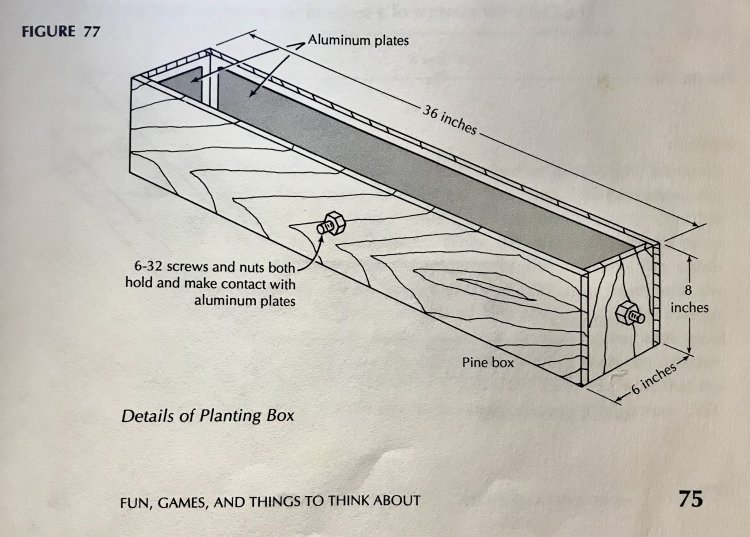Stimulatingly Experimental
Size Jumanji...not quite. In fact, that would be a little scary. Here is a fun project you can do with the entire family in the comforts of your own home.

More
Wires & Watts
- Understanding and Using Electricity by: Irwin Math
Chapter 10: Fun, Games, and Things To Think About
In the early 1900's, when the wonders of electricity were just beginning to be appreciated, a number of experiments were conducted to see if plant growth could be influenced by the application of electrical currents. While the results stated then were impressive, the idea never seemed to catch on and the technuque is not in use today. Does it really work? Only recently scientists have begun using electric currents to help heal broken bones and torn ligaments. One would therefore think that these currents might aid in the growth of plants.
Figure 77 is a wooden planting box that the experimenter can easily build to test the results of electrical currents on plants. It is quite conventional except for the sides and the bottom. These are covered with thin aluminum plates (DPC suggests copper), brought out to terminals as shown. The aluminum is roofing flashing, readily obtainable at hardware stores, and is very easy to cut with a strong pair of scissors. When the box is built, it should be filled with clean potting soil and some quickly growing seeds such as lima beans or peas. The experimenter, under his own guidelines, should then apply a continuous electric current between several plates, as desired, and see what happens. Experiments should be performed with both AC and DC, keeping accurate records of results, and some new principle may actually be discovered. The plants

should be watered regularly and subjected to the same care that is given to regular house plants. For the source of current, only the 6-volt AC or DC power sources described in the book should be used. Furthermore, a lamp of proper voltage should be connected in series with the power source used to prevent damage to the source in the event of an accidental short circuit. (A lamp used in this manner is called a limit resistor.) If results are obtained that seem interesting, the experments should be repeated. If desired, another planting box, built and planted with the same type of plants as the first box may be constructed (but without electrical current) as a way of evaluating the actual effects of the current. The box with the current is the experiment, while the box without the current is called the control.
If the experiment above is something you don't have time or resources to try watch this Facebook clip below for a short-cut idea...
What's Your Reaction?
















